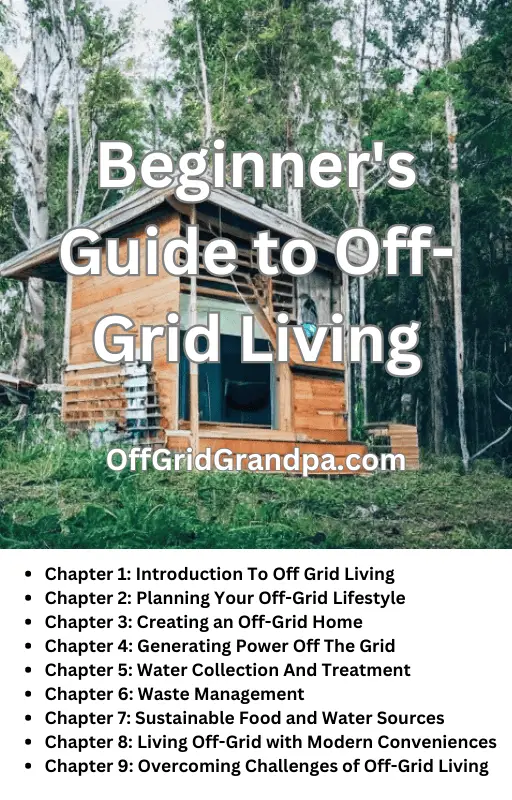Alaska, the Last Frontier, beckons those seeking a life off the grid, surrounded by untamed wilderness and breathtaking landscapes. Living off the grid in Alaska requires a unique set of considerations, blending legal requirements, state-specific challenges, and the essentials of survival—food, water, climate, and power generation. In this comprehensive guide, we’ll explore the ins and outs of off-grid living in Alaska, shedding light on the experiences of local residents who have chosen to embrace a self-sufficient lifestyle.
Legal Considerations
Before diving into the wilderness of off-grid living, it’s crucial to understand the legal landscape. Alaska boasts a relatively lenient stance on off-grid living, allowing residents the freedom to build their homes without the need for building permits in unincorporated areas. However, this freedom is not without limits. Zoning laws and environmental regulations must be navigated carefully to ensure compliance.
Read more: Off Grid Living In Aleutians East Borough ( Alaska )
State-Specific Information
Alaska’s vastness presents both challenges and opportunities for off-grid enthusiasts. With a landmass larger than Texas, California, and Montana combined, the state offers a plethora of remote locations for those seeking solitude. However, the extreme isolation also means limited access to services, making careful planning essential. The state’s long distances and challenging terrain often necessitate alternative transportation methods, such as snow machines, bush planes, or boats.
Essential Aspects of Off-Grid Living
- Food: Alaska’s wild abundance provides a natural pantry for off-grid dwellers. Locals often engage in subsistence hunting and fishing, relying on the rich biodiversity of the land. Foraging for edible plants and berries supplements their diet, creating a harmonious relationship with the environment.
- Water: Access to clean water is a top priority for off-grid residents. Many choose to tap into nearby freshwater sources or install rainwater harvesting systems. Water treatment methods vary, with some relying on gravity-fed filtration systems or traditional boiling techniques.
- Climate: Alaska’s climate is as diverse as its landscapes. From the mild temperatures of the Southeast to the harsh winters of the Interior, off-grid residents must adapt to their specific region. Insulating homes, investing in efficient heating systems, and preparing for extreme weather events are vital considerations.
- Power Generation: With vast expanses of untamed wilderness, Alaskans harness power through various means. Solar panels, wind turbines, and hydroelectric systems are popular choices, each adapted to the unique challenges of Alaska’s climate and topography.
Comparisons with Other States
While Alaska stands as a unique off-grid haven, it’s insightful to compare the experiences of off-grid living across different states.
- Arizona: The arid climate poses water scarcity challenges, leading to a heavy reliance on rainwater harvesting and efficient water management.
- Maine: The densely forested landscape offers abundant wood resources for heating, but harsh winters necessitate robust insulation and heating solutions.
- Montana: Vast open spaces are conducive to solar and wind power, but the colder climate demands advanced heating strategies.
- Hawaii: The tropical climate allows for year-round food production, but island life presents challenges in resource availability and import costs.
- Texas: The wide-open spaces and sunny weather make solar power a viable option, but water scarcity in certain regions requires careful conservation.
Unique Considerations in Alaska
Living off the grid in Alaska comes with its own set of unique challenges. The short growing season limits agricultural possibilities, pushing residents to explore innovative solutions like greenhouse cultivation and hydroponics. Wildlife encounters, including bears and moose, require additional precautions in securing food and waste.
Quotes from Local Residents
To provide a real sense of off-grid living in Alaska, let’s hear from some local residents:
- Eva Foster, Fairbanks: “The winters here are unforgiving, but there’s a beauty in the stillness. We’ve learned to appreciate the simple things, like a well-stocked woodpile and a reliable generator.”
- Jack and Sarah Malone, Homer: “Living off the grid is a dance with nature. Our solar panels keep the lights on, and the salmon run keeps our freezer stocked. It’s a lifestyle that demands respect for the land.”
- Liam Thompson, Talkeetna: “Alaska teaches you resilience. We’ve had to adapt to the unpredictability of the weather and the wildlife. It’s challenging, but it’s a choice we wouldn’t trade for anything.”
Communities in the State
Alaska boasts several off-grid communities where residents have carved out a life in harmony with nature. Places like McCarthy, Talkeetna, and Healy showcase the diverse approaches to off-grid living, each community adapting to the unique challenges of its region.
Key Takeaways
- Adapting to Alaska’s Unique Challenges: Off-grid living in Alaska requires a deep understanding of the state’s distinctive challenges, including extreme climates, short growing seasons, and encounters with wildlife. Residents must embrace innovative solutions, such as greenhouse cultivation and wildlife precautions, to thrive in this rugged environment.
- Legal Freedom with Responsibilities: Alaska offers a unique blend of legal freedom and responsibility for off-grid dwellers. While building permits may not be required in unincorporated areas, navigating zoning laws and environmental regulations is crucial. Residents must strike a balance between the freedom to build their homes and the need to comply with laws that safeguard the state’s natural resources.
- Diverse Approaches to Self-Sufficiency: Off-grid communities in Alaska showcase diverse approaches to self-sufficiency. Whether relying on solar panels, wind turbines, or subsistence hunting and fishing, residents adapt to the specific challenges of their region. Learning from the experiences of local residents like Eva Foster, Jack and Sarah Malone, and Liam Thompson provides valuable insights into the resilience and resourcefulness required for a successful off-grid lifestyle in the Last Frontier.
